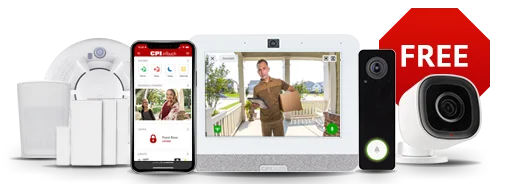Not to introduce a panic, but have you ever thought about the silent hazards lurking in your home? We’re talking about carbon monoxide (CO). According to the Centers for Disease Control and Prevention (CDC), over 20,000 Americans visit the ER each year for symptoms of CO poisoning. We’re here to give you the specific information you need to keep your family and yourself safe from the risk of CO poisoning.
Understanding Carbon Monoxide
Let’s get down to basics. Carbon monoxide is a gas you can’t smell, see, or taste, making it a true menace. Your gas stove, furnace, and even your charming fireplace can be sources of CO. CO tends to leak from older systems that may have blocked/corroded ventilation pipes or heat exchanges.
Where To Place Your CO Detectors
General Guidelines
At a minimum, you should have at least one CO detector on every floor of your house. The National Fire Protection Association (NFPA) recommends this to reduce the risk of CO poisoning significantly. They also recommend checking the batteries every few months to ensure the systems work as intended.
Bedrooms and Sleeping Areas
Why bedrooms? Because you’re more vulnerable when you’re off to dreamland. Carbon monoxide detector placement in your sleeping areas is non-negotiable. Position them about five feet above the floor, and you can rest easy.
Living Areas and Family Rooms
Take your time safeguarding the areas where everyone spends time together. Open concept layout? Central placement is critical. Your CO monitors should all be interconnected, so if one goes off, they all go off.
Basements and Utility Rooms
How far should a carbon monoxide detector be from a furnace? Keep it within 10 feet.
Specific CO Detector Placement Considerations
Kitchens and Cooking Areas
Kitchens get a lot of action, but they also trigger false alarms. Keep CO detectors at least 15 feet from major appliances but close enough to serve their purpose.
Garages and Attached Spaces
Our security experts recommend installing a detector near the door that leads inside the house to keep those indoor spaces safe. If you hear the CO detector going off in your garage or other poorly ventilated space, take precautions before entering to check on the alarm. Don’t just barge in; CO can collect quickly and, even in mass, is undetectable to human senses.
Fireplaces and Chimneys
Your fireplace may be the epitome of cozy, but it’s also a high CO risk. Place a detector nearby but not on top of it to avoid false alarms.
CO Detector Maintenance and Testing
Regular Maintenance
Keep the batteries fresh and test your CO detector monthly. It’s also recommended to replace any outdated detectors every couple of years.
Integration with Home Security Systems
With smart home security systems (like the one offered by CPI Security), you can integrate your smart CO detectors into your home security suite – alerting you with texts and in-app notifications in the event of a CO leak.
CO Detector FAQs
Should I install the detector on the wall or on the ceiling?
- You should place your carbon monoxide detector on the wall about 5 feet above the floor.
How often should I test my CO Detector?
- Monthly
What does the beep mean?
- It could be anything from a low battery to high CO levels.
Can my cat get CO poisoning?
- Absolutely. CO can affect animals and humans.
Do CO Detectors ever expire?
- Around 5-7 years.
You now have the scoop—where to place carbon monoxide detectors, why it’s crucial, and what the experts say. So, let’s make your home is a CO-free zone! It’s not just about gadgets; it’s about ensuring your loved ones never become a statistic.
Stay safe, stay aware, and for comprehensive home safety solutions, give CPI Security’s range of safety alarms a look.
Safety isn’t just an action; it’s a lifestyle. Keep your home safe with CPI Security.




